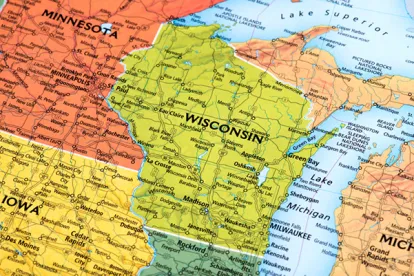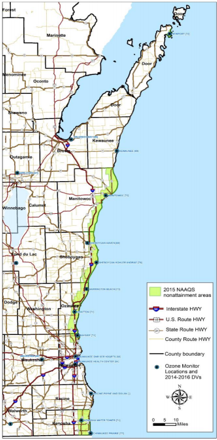The following are five new air developments from the Wisconsin Department of Natural Resources (DNR) and the U.S. Environmental Protection Agency (EPA) that impact Wisconsin businesses:
1. DNR Air Guidance Documents
The 2017 Wisconsin Act 369 requires state agencies to repost all existing air guidance documents for public comment and certify that the contents of the documents include no pronouncements that otherwise should proceed through rulemaking.
The DNR is currently going through the Act 369 process for public comments for all previous guidance and affording interested parties 30 days for comment. Interested parties should review all guidance documents and, where appropriate, comment on whether any content is more properly subject to rulemaking. It may be important to make such comments if an interested party wants to later challenge the contents of the guidance document as violating Act 369 standards.
2. The EPA announces reversal of “once in, always in” policy for major source treatment for hazardous air pollutants
Under this new policy, a major source that takes an enforceable limit on its potential to emit and takes measures to bring its hazardous air pollutant emissions below the applicable threshold becomes an area source no matter when the source may choose to take measures to limit its potential to emit. Sources of hazardous air pollutants previously classified as major sources may be re-classified as “area sources” at any time as long as the facility limits its potential to emit below the major source thresholds.
3. New EPA guidance for netting emissions to avoid New Source Review (NSR) requirements
The NSR program contains stringent requirements that must be obtained prior to commencing construction of a new facility or a major modification of an existing facility if the project results in a significant net emission increase. The procedure for determining emissions triggering a NSR pre-construction permit is a two-step process:
-
Step one: Ascertain if the project will, by itself, result in a significant increase in air emissions. If yes, follow step two.
-
Step two: Determine whether the project combined with other unrelated projects at the facility in a contemporaneous period will result in a significant net emissions increase.
Under previous EPA guidance, it was not permissible to take into account any decreases in emissions obtained by the project when conducting step one analysis. The 2018 EPA memorandum clarifies that emission decreases as well as increases are to be considered as a part of step one provided they result from the project. This new policy will help streamline the permitting process for certain projects. Projects that might benefit from this new policy include switching to cleaner burning fuels and improving efficiency.
4. New EPA guidance on determining source boundaries for analysis of impacts to ambient air
On Dec. 2, 2019, the EPA issued a memorandum revising its definition of ambient air under the Clean Air Act (CAA). Under this new policy, the guidance allows state and federal agencies to exclude air surrounding a facility from air quality monitoring if the facility owner has precluded the public from being able to access the property. Before this new guidance, the EPA required a physical barrier, such as a fence, to be erected to qualify for the exclusion.
5. Challenges to EPA designations of nonattainment for ozone under 2015 ozone standards
The EPA has adopted limited nonattainment areas for the 2015 Ozone standards in Wisconsin as depicted in the following map.
Clean Wisconsin has challenged these nonattainment areas in a case pending in the D.C. Circuit Court of Appeals entitled Clean Wisconsin v. Environmental Protection Agency, et. al. Case No.18-1203. Clean Wisconsin, among other arguments they are making, include the allegation that EPA did not create a sufficient record by making independent determinations on these areas identified as nonattainment. Rather, Clean Wisconsin indicates that the EPA inappropriately relied upon information provided by the DNR to support these limited nonattainment areas.
The EPA is requesting a remand with the agency providing an opportunity to support its final area nonattainment designations. The state of Wisconsin has intervened and indicated there is no need for any remand to the agency since the record is adequate in supporting the EPA’s original designations.
It will be important for major emitters of volatile organic compounds (VOCs) or Nitrogen Dioxide (NOx) in southeastern Wisconsin to track the results of this decision. A remand and possible redesignation of these nonattainment areas to include a larger area could impose significant new emissions and offset burdens on existing emitters that plan to expand their operations.
It should be noted that recent monitoring data demonstrates some improvement of air quality for ozone. Additionally, based upon the last three years of monitoring data, DNR has requested attainment designations for Ozone for Door County (partial) under the 2015 standards and for Kenosha and Sheboygan Counties under the 2008 standards.
Staying current on policy changes and litigation
It is important for businesses to stay abreast of these agency policy changes at the state and federal level as well as the outcome of the pending ozone litigation. These developments will have an important impact on air permitting strategies.



 />i
/>i

